Key takeaways
- Activist teacher resources, including National Geographic materials, promote critical thinking and encourage students to become engaged, empathetic citizens.
- National Geographic’s storytelling approach connects students to global issues, making complex topics accessible and fostering curiosity.
- Using diverse formats and engaging activities helps accommodate different learning styles and inspires a sense of shared responsibility among students.
- Balancing scientific accuracy with emotional engagement is key to empowering students as informed advocates for change.

Understanding activist teacher resources
Activist teacher resources are more than just lesson plans or textbooks; they are tools that challenge us to think critically and inspire students to take meaningful action. From my experience, these resources help bridge the gap between knowledge and real-world impact, pushing both teachers and learners to confront uncomfortable truths and embrace change.
Have you ever felt that teaching could be a way to ignite passion for social justice within your classroom? I know I have, especially when I use materials that connect directly to current issues, encouraging students to reflect on their roles as active citizens rather than passive observers.
The emotional weight these resources carry is profound—they do not merely impart information but evoke empathy and understanding. Engaging with activist teacher resources often feels like a call to responsibility, reminding me why education must be more than neutral facts; it should empower and transform.
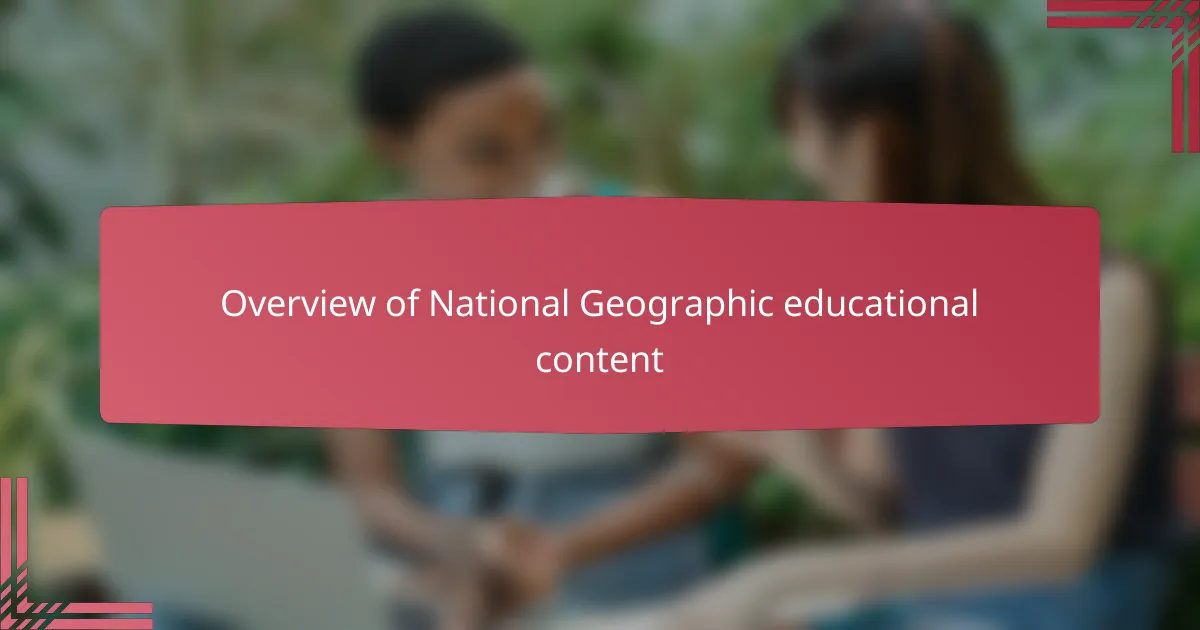
Overview of National Geographic educational content
National Geographic’s educational content always stands out to me because it combines stunning visuals with deeply researched stories that bring learning to life. Have you ever noticed how their resources don’t just present facts but weave narratives that connect students to the natural world and human cultures? This storytelling approach makes complex topics feel accessible and relevant, which I find crucial in an activist classroom.
What strikes me most is the diversity in their materials—from immersive documentaries to hands-on classroom activities. These resources invite exploration and critical thinking, encouraging students to ask questions about our planet and society. I’ve seen firsthand how this sparks curiosity and empathy, two qualities that are essential for nurturing young activists.
National Geographic also emphasizes scientific accuracy while promoting environmental and social responsibility. This balance reassures me that, as a teacher, I’m offering my students trustworthy information that challenges them to consider their role in making a difference. Doesn’t that align perfectly with the goals of activist education?
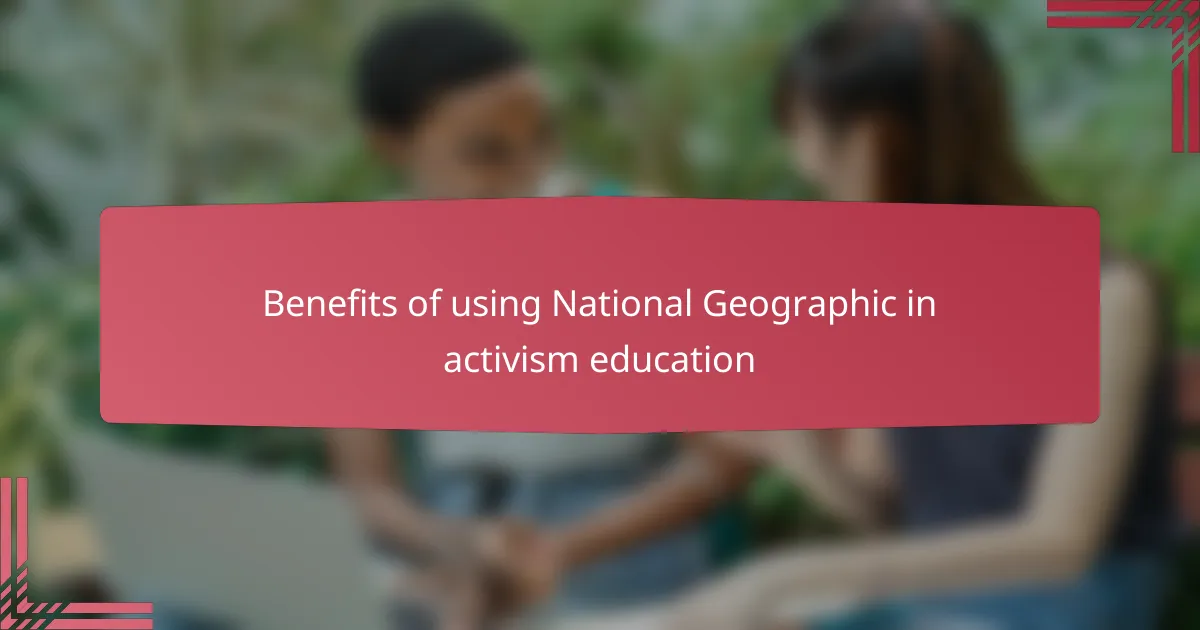
Benefits of using National Geographic in activism education
What I appreciate most about using National Geographic in activism education is how it brings real-world issues into the classroom with such vivid clarity. Have you ever seen a student’s eyes light up when they connect a powerful image or story to a social or environmental challenge? Those moments of engagement are priceless because they transform abstract concepts into personal calls to action.
I’ve noticed that National Geographic’s content naturally fosters empathy. When students explore stories about diverse communities or endangered ecosystems, they don’t just learn facts—they feel the urgency and complexity behind those facts. This emotional connection is vital; it moves activism beyond theory and helps young learners develop a deeper sense of responsibility.
Another benefit is the trustworthiness of their science-based information. In a world full of misinformation, I find it reassuring that the materials I use come backed by rigorous research. This credibility empowers both me and my students to discuss and challenge current issues confidently, knowing we are grounded in truth. Isn’t that what we want from activism education—to build informed, passionate agents of change?

Integrating National Geographic materials in the classroom
When I first started integrating National Geographic materials into my lessons, I noticed how effortlessly their vivid imagery captivated my students’ attention. Have you ever watched a classroom fall silent just because a photograph or a video clip sparked genuine curiosity? Those moments convinced me that these resources are not merely supplements—they are gateways to deeper understanding.
I often pair National Geographic’s stories with open discussions, prompting students to reflect on the connections between what they see and their own communities. It’s powerful to witness how these resources encourage learners to think critically and personally about global issues. Don’t you find that when students engage emotionally, their commitment to change becomes more authentic?
What I find especially valuable is the variety National Geographic offers—whether it’s interactive maps, firsthand accounts, or scientific data. Using these different formats allows me to reach different learning styles, making activism education inclusive and dynamic. From my experience, this diverse approach helps students connect the dots between knowledge and action in meaningful ways.
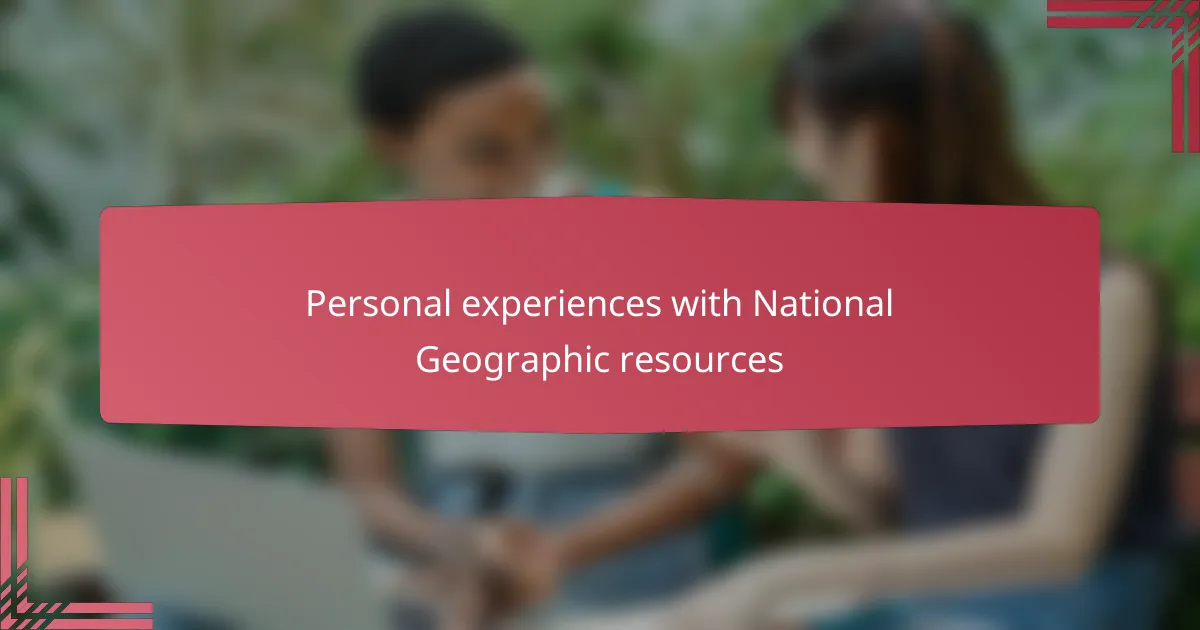
Personal experiences with National Geographic resources
Engaging with National Geographic resources has often felt like embarking on small adventures right from my classroom. I remember a particular lesson on coral reefs where the vivid images and stories didn’t just teach my students about ecosystems—they made them worry about the reefs’ survival. Have you experienced that spark when learning shifts from abstract facts to heartfelt concern?
Sometimes, these resources catch me by surprise too. While preparing a unit on indigenous cultures, I found myself deeply moved by firsthand accounts that challenged my own assumptions. It made me realize how National Geographic doesn’t just inform us; it invites us to listen and reflect on perspectives we might overlook. Isn’t that what meaningful education should do?
I’ve also noticed that using their materials creates moments of genuine connection in class. Watching students discuss a powerful photo or documentary clip, you can feel their empathy growing alongside their knowledge. Those discussions often linger long after the bell rings, which tells me these resources are planting seeds that might inspire lifelong activism. Have you had similar experiences where a single resource truly resonated with your students?
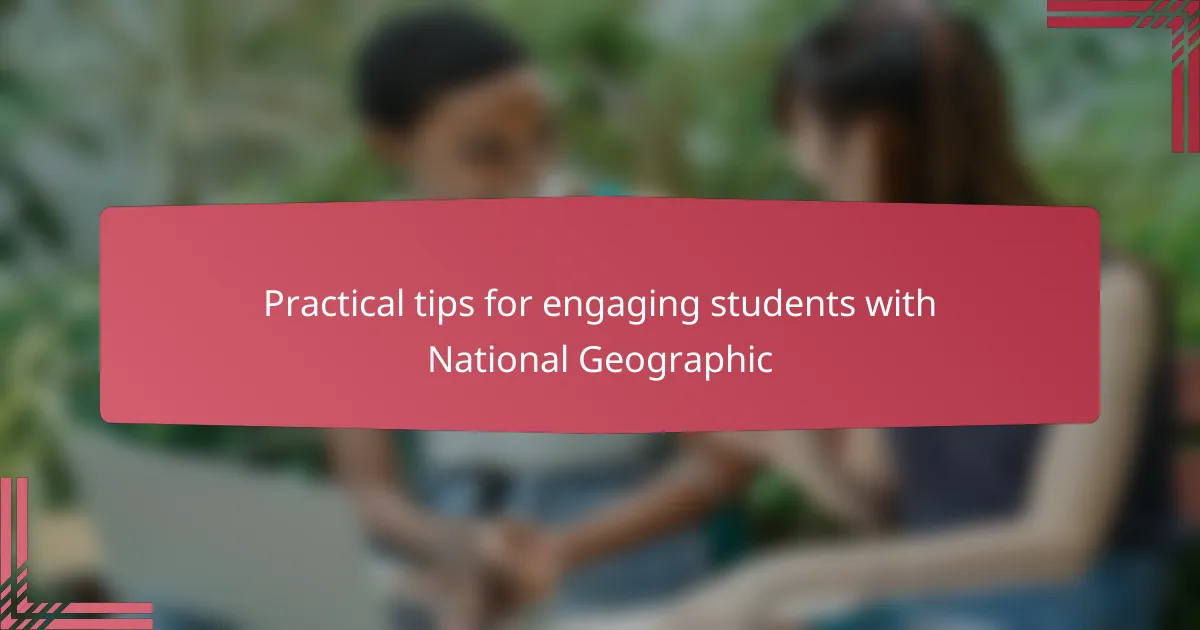
Practical tips for engaging students with National Geographic
One practical tip I’ve found effective is to start lessons with a striking National Geographic image or short video. Have you noticed how a single powerful photo can instantly grab students’ attention and spark curiosity? From my experience, this visual engagement sets the stage for deeper discussions and encourages students to ask meaningful questions about the issues presented.
Another approach I often use is to incorporate National Geographic’s interactive maps and activities into group work. When students collaborate using these tools, they not only understand complex topics better but also develop a sense of shared responsibility. Don’t you think that hands-on experiences help make abstract concepts more tangible and relevant to their lives?
Finally, I recommend pairing National Geographic content with reflective writing prompts or open-ended discussions. I’ve seen how guiding students to connect global stories to their own values and communities leads to authentic empathy and critical thinking. How can we expect young activists to emerge if they don’t have space to process and personalize what they learn? This blend of media and reflection has been, in my view, a game-changer in fostering lasting engagement.
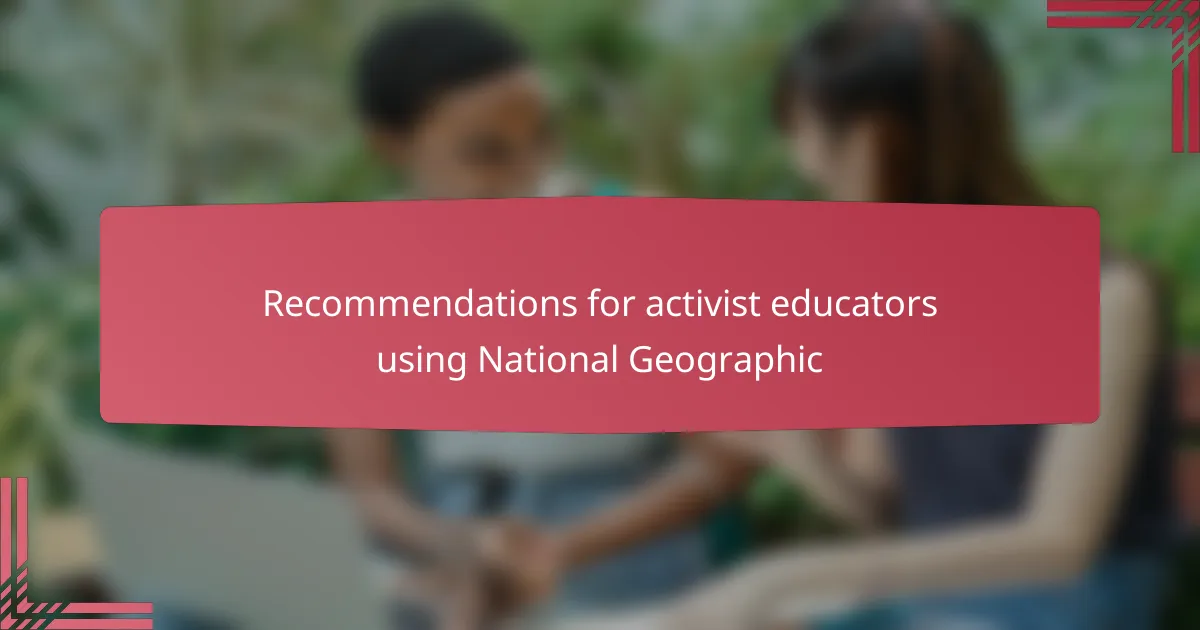
Recommendations for activist educators using National Geographic
When I recommend National Geographic to fellow activist educators, I often emphasize the importance of selecting materials that resonate emotionally as well as intellectually. Have you noticed how a compelling image or story can open a doorway to empathy that pure data seldom achieves? From my experience, such moments spark the kind of reflection that turns awareness into motivation for change.
I also encourage using National Geographic’s diverse formats—videos, articles, maps—not just as standalone resources but as part of a larger dialogue in the classroom. When I blend these tools with open-ended questions or group discussions, I see students wrestling with complex social and environmental issues in ways that feel personal and urgent. Isn’t that what we want—to cultivate activists who think deeply and feel deeply?
Lastly, balancing scientific accuracy with activist goals is crucial. I trust National Geographic’s commitment to evidence-based content because it gives me confidence that the activism we inspire is grounded in truth, not opinion. How can we expect young learners to advocate effectively if they are not empowered with reliable knowledge? This foundation has made all the difference in my teaching practice.